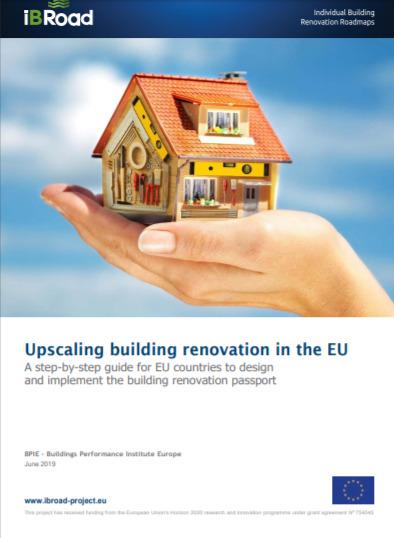Upscaling building renovation in the EU – A step-by-step guide for EU countries to design and implement the building renovation passport
Margaux Barrett

The report outlines barriers and enablers for the design and implementation of the iBRoad tools, consisting of an individual Building Renovation Roadmap and a Logbook, to inform the development and replication of the building renovation passport across Europe.
Building owners face multiple barriers when planning an energy renovation, including a lack of knowledge on which renovation measures to implement, and in which order. Building passports are one instrument that can help address this challenge and uptake the renovation rate in the EU. The concept suggested by the H2020 project iBRoad consists of a customised renovation plan over a long-term period and a logbook, a repository where all the building-related information can be stored and continuously updated.
This report presents the main barriers and enablers to designing and implementing the iBRoad concept across the EU. Based on preliminary inputs collected from pilot countries as well as those with similar initiatives in place, it gives an overview of what countries considering integrating the tool need to do.
The main boundary conditions to the design and implementation of the iBRoad roadmap and logbook include economic viability, technical and legal feasibility, as well as human-related restrictions. A feasibility study of the iBRoad concept for implementation in a specific other country or region and/or context should thus analyse concept initiation and design, end-user needs and stakeholder involvement, market status, software development, legal and financial preparations, as well as expert training and impact assessment.
Building renovation recommendations should in addition be integrated with other policy instruments. Only when embedded in a supportive policy context, can they be fully implemented and practically transferred into renovation activity. The policy instruments with the highest positive impact are the combination with tax and funding schemes, the long-term targets in building codes and renovation obligations.
Find the report here.



